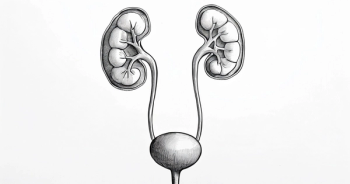
First-line Treatment Options for mCRPC
Dr. Morgans discusses first-line therapy options for mCRPC and her approach to deciding between different treatment options.
Alicia Morgans, MD, MPH: The first-line options for treatment of metastatic CRPC [castration-resistant prostate cancer] are numerous, and we make our decisions based on the treatments the patient has had prior, either for nonmetastatic CRPC or for metastatic hormone-sensitive prostate cancer.
For example, patients who have had treatment with intensified ADT [androgen deprivation therapy] for metastatic hormone-sensitive prostate cancer with abiraterone, enzalutamide, or apalutamide should receive a different approach for metastatic CRPC. Usually, it’s going to be a docetaxel chemotherapy and an ADT combination in that first-line setting. If a patient has had docetaxel in the metastatic hormone-sensitive setting, they would typically proceed with a shift in the mechanism of action to treatment with ADT plus abiraterone or enzalutamide.
For patients who have had treatment for nonmetastatic CRPC, we only have those AR [androgen receptor]–targeted agents as options for intensification with our ADT, and those patients typically get treatment with chemotherapy. It’s important to remember that there are other options; for patients who have relatively slowly progressing and asymptomatic disease, sipuleucel-T is an option. For patients who have DRD alterations, they could potentially get treatment with olaparib if they had previous treatment with an AR-targeted treatment combination with ADT. Finally, if patients have significant bone metastases and pain, they could even get treatment with radium.
There are a lot of options, and we make our treatment decisions for first-line metastatic CRPC based on the combinations of therapies the patient has had in the past.
Transcript edited for clarity.
A 70-Year-Old Man with Metastatic Castration-Resistant Prostate Cancer
May 2017
Initial presentation
A 70-year-old man presents with nocturia and decreased appetite
Clinical workup
- PMH: Unremarkable
- PE: DRE, enlarged prostate
- TRUS and biopsy revealed adenocarcinoma of the prostate gland, Gleason score 9 [5+4]
- CT showed minimal nodal involvement
- PSA 42 ng/mL, LDH 404 U/L
- His ECOG PS is 1
Treatment
- Patient started on ADT with initial PSA response 12 ng/mL
December 2017
- Patient complained of right hip pain and abdomen pain
- Imaging with CT and bone scan showed 2 metastatic bone lesions in the pelvis and diffuse liver lesions
- PSA 30 ng/mL; Hb 9.4 g/dL; ANC 1.5
- Patient started on docetaxel, 6 cycles completed
- Follow-up imaging showed stable disease
November 2018
- PSA 40 ng/mL
- Routine imaging shows new metastatic bone lesions in the pelvis
- Patient started on abiraterone and prednisone, after 6 months he has a restaging scan which shows continued progression of disease
January 2019
- Patient had a 68Ga-PSMA-11 scan when screening for the VISION trial which shows several positive metastatic lesions in the pelvis and liver metastases
- He qualified on screening and enrolled in a clinical trial and treated with 177Lu-PSMA-617 as per the VISION protocol (7.4 Gbq [100 mCi] every 6 weeks for 4-6 cycles)








































